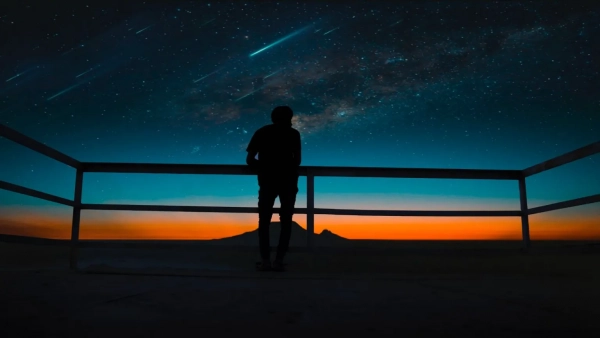Brilliant August: Perseid Meteor Shower and Enchanting Blue Moon
According to HAS, August doesn't feature many astronomical events, but each occurrence is extraordinarily special. The Perseid meteor shower brightening the mid-August night sky and the enchanting Blue Moon are events worth admiring. Here are the astronomical phenomena happening in August:
August 4 – New Moon
The Moon will be on the same side of the Earth as the Sun and will not be visible in the night sky. This phase occurs at 18:15 (Vietnam time). This is the best time of the month to observe faint objects such as galaxies and star clusters because there is no moonlight to interfere.

August 12-13: Perseid Meteor Shower
The Perseids is one of the best meteor showers to observe, producing up to 60 meteors per hour at its peak. It is produced by comet Swift-Tuttle, discovered in 1862. The Perseids are famous for producing a large number of bright meteors. The shower runs annually from July 17 to August 24. It peaks this year on the night of August 11 and the morning of August 12. The first-quarter moon will block out some of the fainter meteors in the early evening, but the moon will set shortly after midnight, leaving dark skies for what could be a spectacular show in the early morning hours. The best viewing will be from a dark location after midnight. Meteors will radiate from the constellation Perseus but can appear anywhere in the sky.

August 20 – Full Moon, Blue Moon
The moon will be located on the opposite side of the Earth as the Sun, and its face will be fully illuminated. This phase occurs at 01:27 (Vietnam time). This full moon was known by early Native American tribes as the Sturgeon Moon because the large sturgeon of the Great Lakes and other major lakes were more easily caught at this time of year. This moon is also known as the Green Corn Moon and the Grain Moon. Because this is the third of four full moons in this season, it is also known as a Blue Moon.
This rare event only happens once every few years, giving rise to the term "once in a blue moon." Normally, there are only three full moons in each season of the year. However, because the lunar cycle is 29.53 days, occasionally a season will have four full moons. The extra full moon in a season is known as a Blue Moon. Blue Moons occur on average every 2.7 years.
Submit feedback
Your email address will not be made public. Fields marked are required *
Search
Trend
-
What is Black Myth: Wukong? Detailed Guide on System Requirements and Gameplay
08-21-2024 . 1k view
-
The simplest and fastest way to log into the Chinese TikTok, Douyin.
01-10-2022 . 1k view
-
Blog sites that will accept AI generated content
07-26-2024 . 1k view
-
Call of Duty: Black Ops 6 - Intense, Mysterious, and Surprising Warfare
09-02-2024 . 1k view
-
The "End of Life" for Windows 10: A Massive E-Waste Threat and Sustainable Solutions
08-18-2024 . 952 view










0 feedback